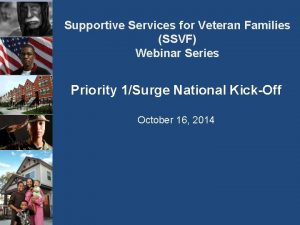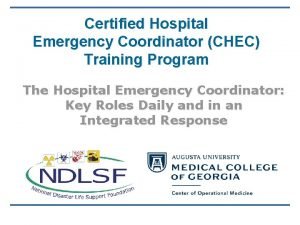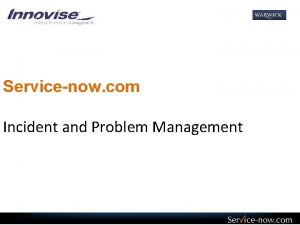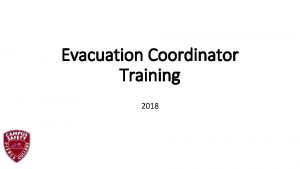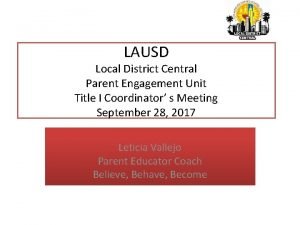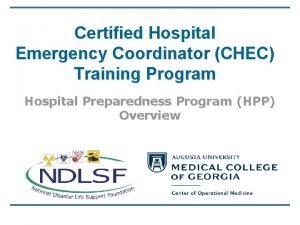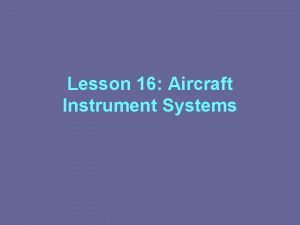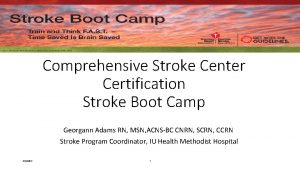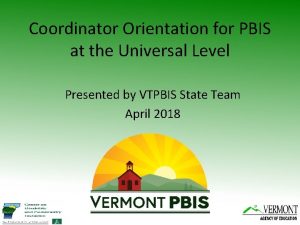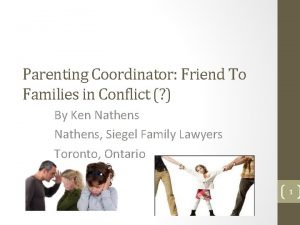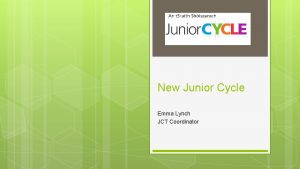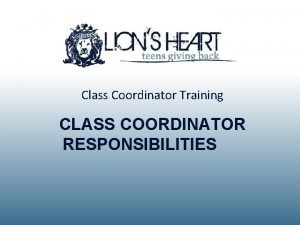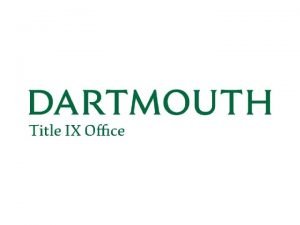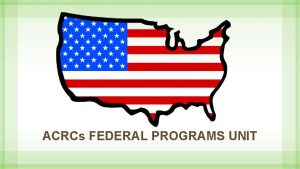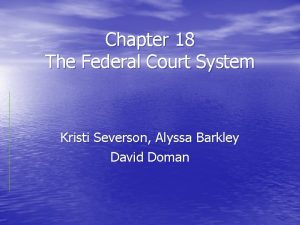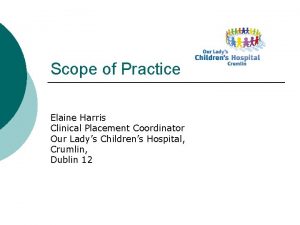Federal Programs Dr Kristi Harris Federal Programs Coordinator














- Slides: 14

Federal Programs Dr. Kristi Harris Federal Programs Coordinator

Mission & Vision Mission “Learning is Essential for All” Vision The vision of the Cleveland School District is to develop a community of lifelong learners who are productive citizens that engage in studies that will enable them to creatively and effectively learn and apply information.

Goals • Goal 1: Student Achievement-To focus organizational efforts and align resources to close achievement gaps and ensure all students are college or work ready. • Goal 2: Positive Culture-To create a respectful, positive, district culture that is focused on teaching and learning with high expectations. • Goal 3: Community Engagement-To establish trust with all stakeholders (community, parents, students, and educators) by maintaining open, honest communication and building positive relationships.

Goals continued • Goal 4: Employee Retention-To recruit and retain highly qualified teachers and administrators that will lead schools that are safe, orderly, and high achieving.

Purpose • The purpose of federal programs is to provide opportunities that will enhance students’ educational endeavor beginning as early as kindergarten. These programs are designed to promote student achievement as each student acquires the knowledge and skills as outlined in the State’s Curriculum Frameworks in the areas of language arts/reading and mathematics, as well as augment the character education and drug-free curriculum that is addressed in all schools. • These allocations, combined with state and local funds, supplement the programs that are currently in place within the district to improve student achievement. Schools with forty percent (40%) or more children from low-income families qualify to provide school wide services to all students. Currently, the Cleveland School District supports seven schools that meet this criteria; Bell Academy, DM Smith Elementary, Nailor Elementary, Parks Elementary, Pearman Elementary, Cleveland Central Middle School, and Cleveland Central High School.

Title I • This program provides financial assistance through State educational agencies (SEAs) to local educational agencies (LEAs) and public schools with the highest numbers or percentages of poor children to help ensure that all children meet challenging State academic content and student academic achievement standards. These special populations include, among others, students with disabilities, English language learners, migrant students and the homeless, each of which have separate programs under the Elementary and Secondary Education Act of 1965 (ESEA). • Our 2020 -21 allocation is $1, 443, 688. 15.

Title II • This program combines the former Eisenhower Professional Development Program and the former Class-Size Reduction Initiative into one funding program. • Our 2020 -2021 allocation is $202, 522. 00. The purpose of Title II is to: • • Increase academic achievement by improving teacher and principal quality; Increase the number of highly qualified teachers in classrooms; Improve the skills of principals and assistant principals in schools; and Increase the effectiveness of teachers and principals by holding LEAs and schools accountable for improvements in student academic achievement.

Title IV, Student Support and Academic Enrichment • Purpose • The Student Support and Academic Enrichment (SSAE) program is used to improve student academic achievement by increasing the capacity of States, local educational agencies, schools, and local communities to: 1) provide all students with access to a well-rounded education; 2) improve school conditions for student learning; and 3) improve the use of technology to improve the academic achievement and digital literacy of all students. • * These funds are allocated separately to the Consolidated Federal Program Application. • The 2020 -2021 allocation is $ 125, 698. 00.

Title V, Part B, Small Rural School Achievement • The purpose of the Small, Rural School Achievement (SRSA) program is to provide rural LEAs with financial assistance to fund initiatives aimed at improving student academic achievement. • Local education agencies (LEAs) are entitled to funds if they meet basic eligibility and application requirements. Awards are issued annually, and award amounts are determined using a formula. We allocated $40, 038. 85.

Parental Involvement • The Cleveland School District believes that there is a direct link between parent involvement and student achievement. We also believe that every effort must be made to provide opportunities whereby parents can expand enhance their roles in students' achievement. • In order to facilitate these beliefs, we submit a Title I Parental Involvement Plan

Parental Involvement continued • Our Parental Involvement Plan is funded by 1% of the Title I Allocation, the 2020 -2021 funds are approximately $1, 443, 668. 15. To meet the needs identified through input from our parents we have earmarked $1, 443, 668. 15 of Title funds to support our efforts to improve parent involvement throughout the district.

Homeless • All school districts are required to maintain compliance with the Mc. Kinney-Vento Act which provides specific rights for homeless students. Every school district must designate a Mc. Kinney-Vento Liaison to assist in identifying , supporting, and ensuring the rights of homeless students and families. These rights include waiving certain requirements, such as proof of residency, when students are enrolling and allowing categorical eligibility for certain services, such as free lunch. The Act also states: • Students who are homeless may attend their school of origin or the school where they are temporarily residing. • Parents or guardians of homeless students must be informed of educational and related opportunities. • Students who are homeless may enroll without school, medical, or similar records. • Students who are homeless and their families receive referrals to health, dental, mental health, substance abuse, housing, and other needed services.

Homeless continued • Students who are homeless have a right to transportation to school. • Students must be provided a statement explaining why they are denied any service or enrollment. • Students must be enrolled in school and receive services, such as transportation, while disputes are being settled. • Students are automatically eligible for Title I services. • School districts must reserve a portion of Title IA funds to serve homeless students. • School districts must review and revise policies that serve as barriers to homeless students. • Schools must post information in the community regarding the rights of homeless students and unaccompanied youth in schools and other places where homeless families may frequent and written in a language they can understand. • School districts must identify a Mc. Kinney-Vento Liaison to assist students and their families.

Foster Care • On June 23, 2016, the U. S. Department of Education and the U. S. Department of Health and Human Services released joint guidance to states, school districts and child welfare agencies on the new provisions in the Every Student Succeeds Act (ESSA) for supporting children/youth in foster care. The guidance aims to assist state and local partners in understanding and implementing the new law, and to inform state and local collaboration between educational and child welfare agencies across the nation for the well-being of children in foster care.
 Digital design and computer architecture arm edition
Digital design and computer architecture arm edition Cpmcd in software engineering
Cpmcd in software engineering Ssvf university
Ssvf university Recall coordinator
Recall coordinator Senior coordinator shaklee
Senior coordinator shaklee Chec certification
Chec certification Service now problem management
Service now problem management Evacuation coordinator
Evacuation coordinator Title 1 coordinator lausd
Title 1 coordinator lausd Certified hospital emergency coordinator
Certified hospital emergency coordinator The tilting or turning of a gyro in response to pressure
The tilting or turning of a gyro in response to pressure Stroke coordinator boot camp
Stroke coordinator boot camp Level coordinator
Level coordinator Parenting coordinator ontario
Parenting coordinator ontario Jct coordinator role
Jct coordinator role


